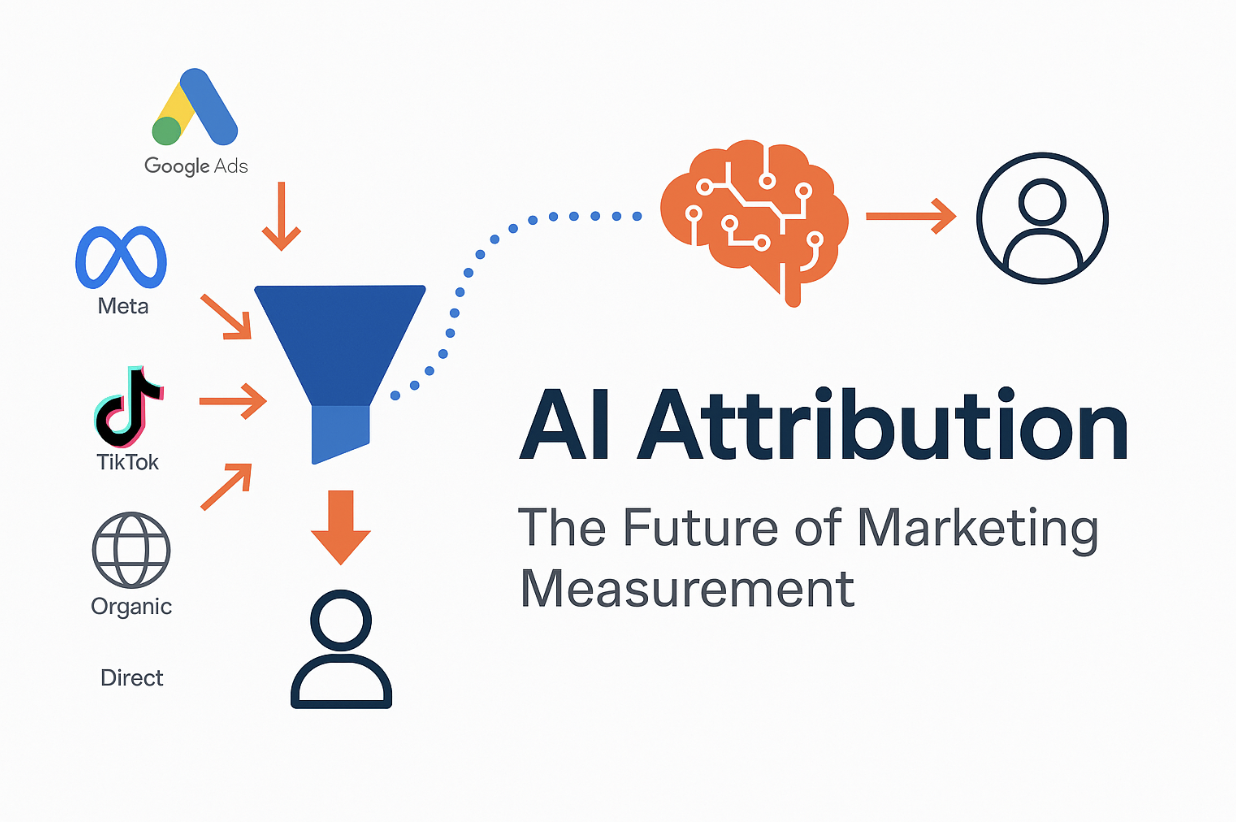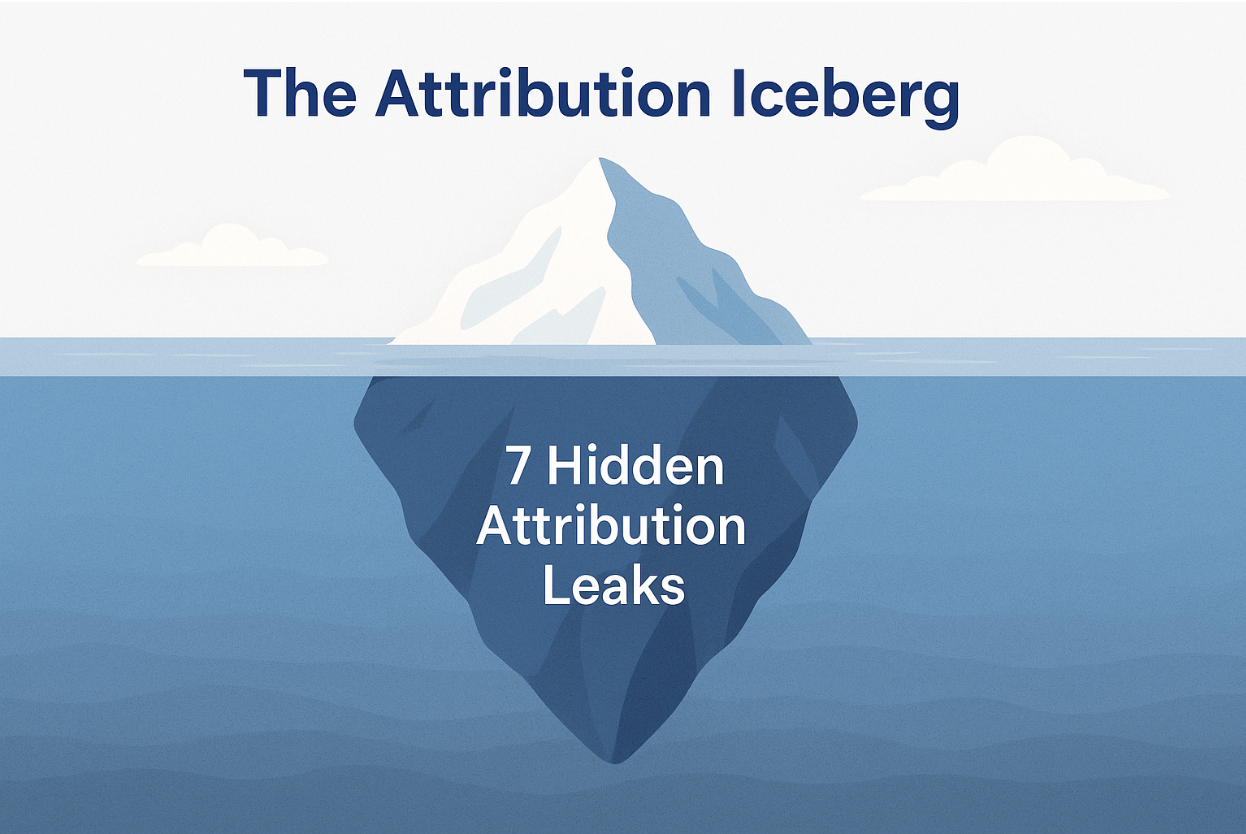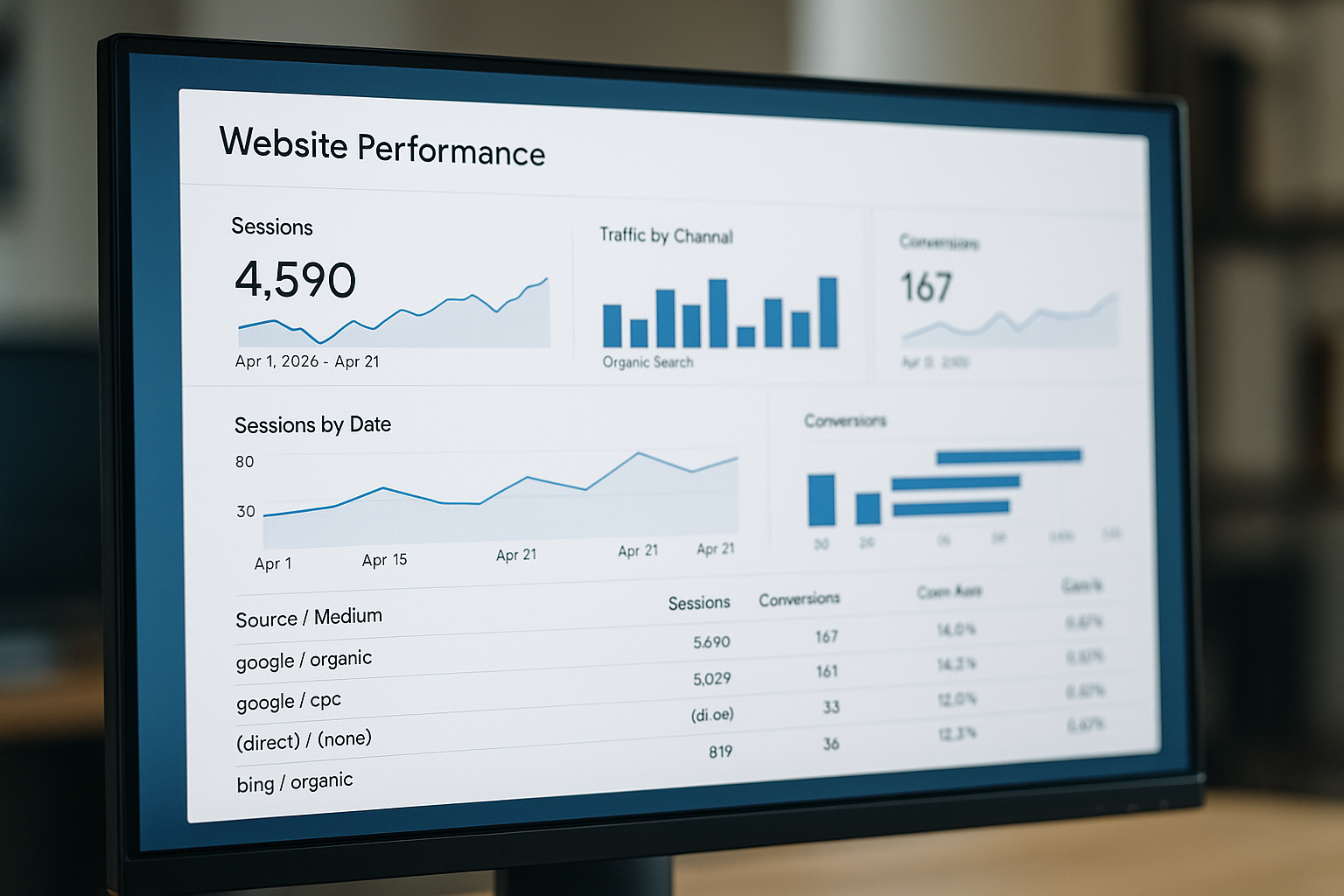
Discover how AI attribution reshapes marketing in 2025. Learn benefits, risks, and how to make it work on a clean, trusted data foundation.
Attribution has always been complicated. Every platform wants credit. GA4 numbers rarely match ad dashboards. Finance teams keep asking why revenue reports don’t align with the books.
Now AI is being positioned as the solution to attribution chaos. But does it really deliver?
This guide breaks down what AI attribution actually means, where it surpasses traditional models, where it falls short, and how leading brands can put it to use responsibly in 2025 and beyond.
What Is AI Attribution?
AI attribution uses machine learning to understand how different touchpoints contribute to conversions.
Instead of relying on rigid rules like last-click or linear models, AI attribution:
- Learns from real customer journeys over time
- Adjusts automatically as new behaviors appear
- Predicts which touchpoints are most likely to drive conversions in the future
It’s not a fixed model, it’s a living system that adapts as customers evolve.
Why Traditional Attribution Falls Short
Even with GA4’s data-driven attribution, persistent issues remain:
- Cross-device blind spots → the same person may look like three different users.
- Messy UTMs → bad tagging pushes conversions into “Direct.”
- Pixel vs. GA4 mismatches → ad platforms use click- and view-through logic, GA4 doesn’t.
- Static models → they can’t forecast or adapt to new customer behavior.
AI attribution is designed to fill these gaps — but only when it’s built on clean, accurate data.
How AI Enhances Attribution
1. Real-Time Attribution
AI can process millions of touchpoints instantly, helping brands see ROI changes within hours, not weeks.
Example: If Meta ads start slipping, AI picks up early signals and adjusts spend before budgets are wasted.
2. Predictive Attribution
Beyond explaining past conversions, AI forecasts which next steps are most likely to convert.Example: If the system finds that 3 page views + 1 TikTok ad → 80% chance of purchase, budgets can shift to amplify that path.
3. Cross-Channel & Cross-Device Clarity
AI connects fragmented journeys, unifying identities across mobile, desktop, app, and even offline.Example: A shopper clicks a YouTube ad on mobile, later converts on desktop search. AI attribution credits both, not just the final click.
4. Journey Simulations
Some platforms are starting to build digital twins of customer journeys, letting marketers test campaigns in a virtual environment before launch.
Where AI Attribution Still Struggles
Marketers should remain cautious. AI attribution isn’t flawless:
- Data quality risk → poor tagging or duplicate events train the model incorrectly.
- Black box models → vendors rarely explain how credit is assigned.
- Bias → if budgets leaned toward Google Ads in the past, AI may keep over-crediting it.
- Privacy boundaries → compliance laws limit what AI can access or stitch together.
How to Implement AI Attribution Correctly
1. Build a Clean Data Foundation
- Standardize UTMs, fix event setups, remove duplicates.
- Use server-side GTM for more reliable tracking.
👉 See our guide on GA4 attribution leaks for real-world fixes.
2. Use AI as a Layer, Not a Replacement
AI attribution should complement GA4 and MMM (Marketing Mix Modeling), not replace them.
3. Demand Transparency
Ask vendors:
- What data sources power the model?
- Can the decision-making be audited?
4. Test with Incrementality
Back up AI insights with controlled experiments to prove lift.
Case Example: AI Attribution in Action
A subscription brand saw inflated ROAS due to duplicate events. After cleaning GA4 tracking and adding predictive attribution:
- AI revealed undervalued top-funnel campaigns
- Budget shifts increased true ROAS by 22%
- Finance finally trusted the numbers
The Future of AI Attribution
Looking forward, expect rapid evolution:
- Autonomous agents → AI tools that both assign credit and move budgets across channels automatically
- Lifetime-value forecasting → attribution tied not just to conversion, but customer value over time
- Privacy-first models → attribution operating inside data clean rooms, balancing accuracy and compliance
Conclusion
AI attribution is not a silver bullet, but it is a leap forward.
It will reshape how we measure marketing, provided it’s built on a strong foundation of clean data.
At Y77, we help brands repair attribution at the root. That way, when AI enters the mix, it’s working with trustworthy, accurate inputs.
The future isn’t about AI replacing attribution.
It’s about AI making attribution sharper, faster, and more actionable.


